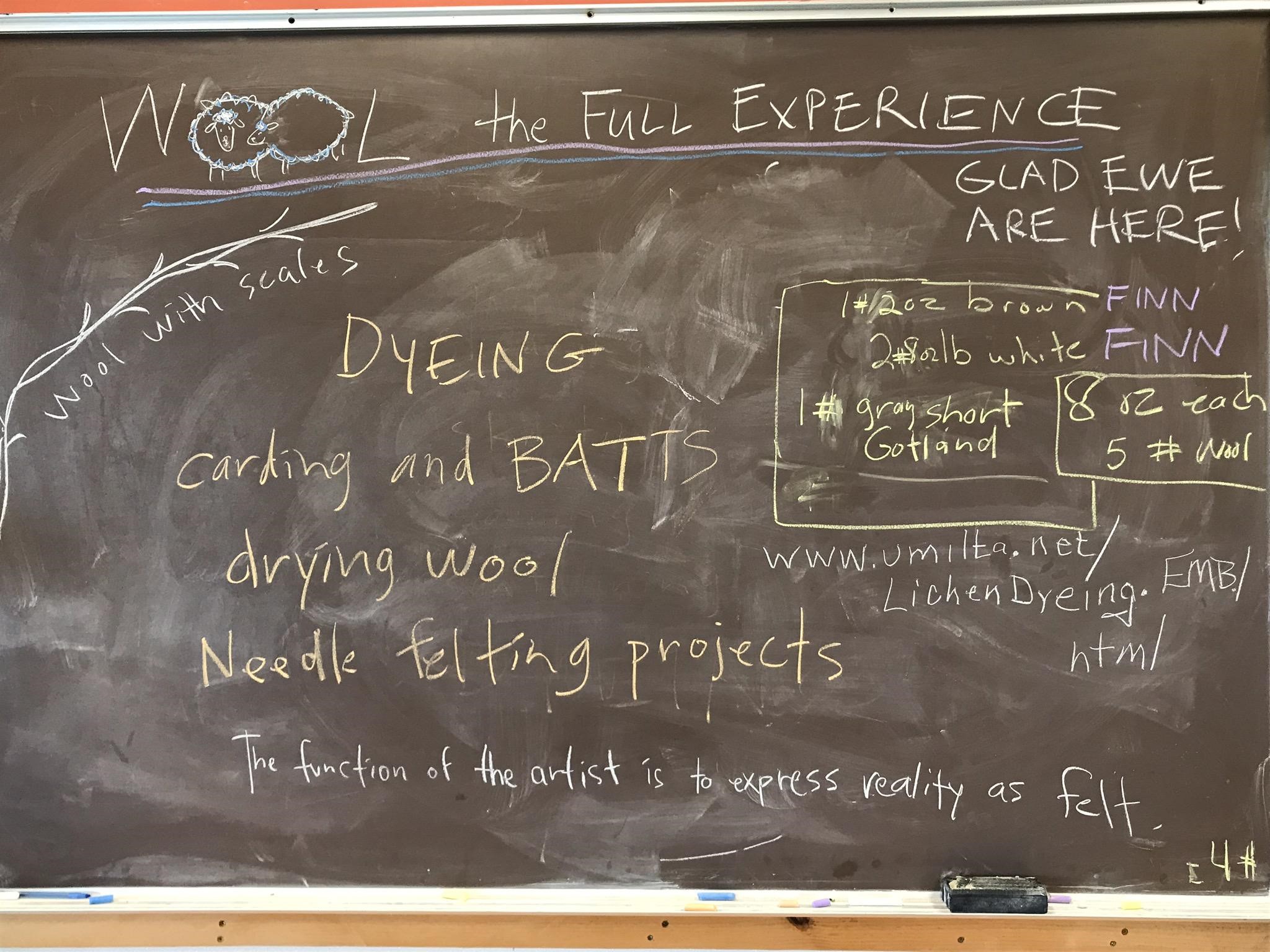
Wool, the Full Experience
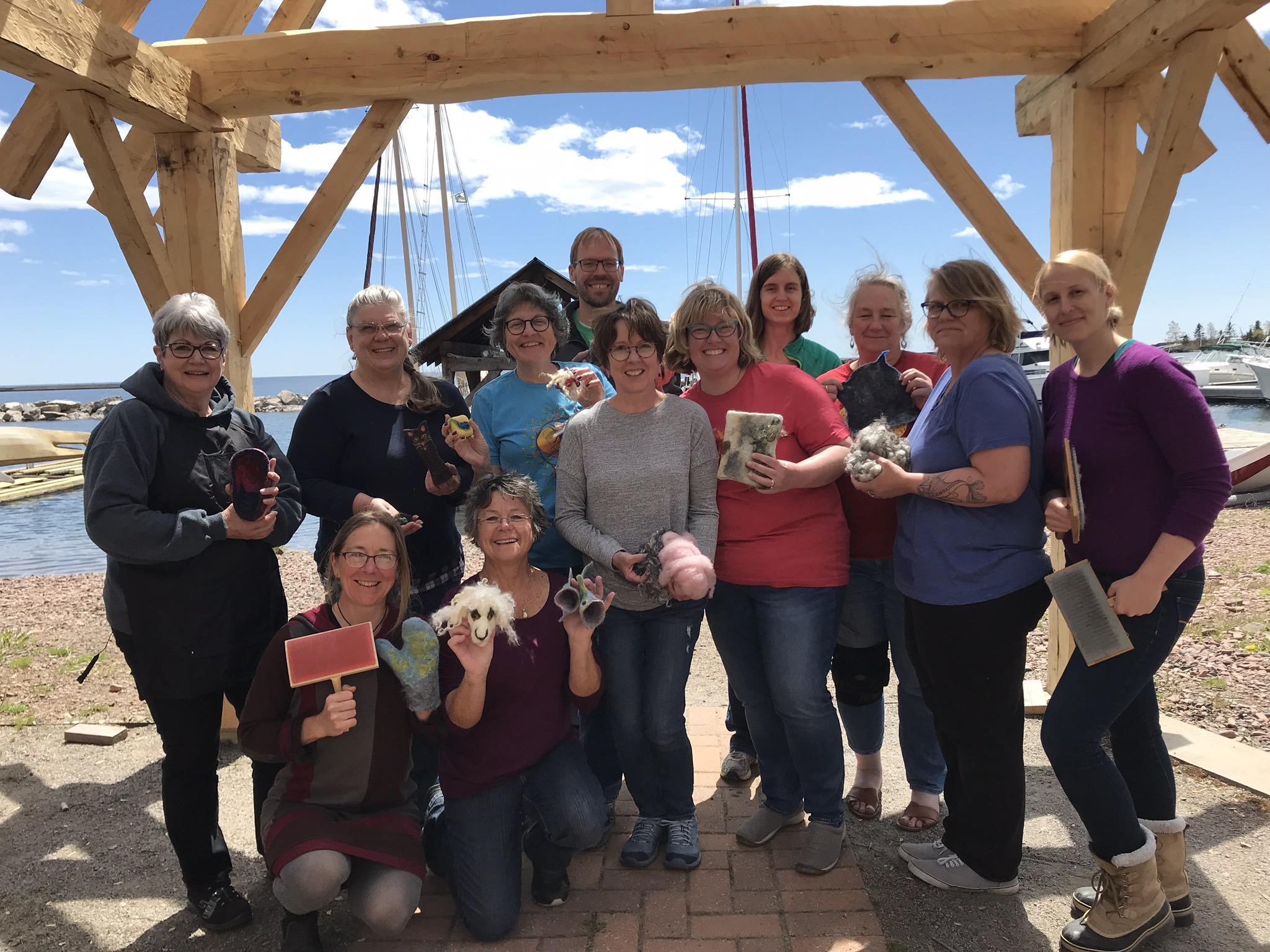
One of my favorite weekends of the year is the annual, Wool, The Full Experience class at North House Folk School. It’s the one time during the year that sheep come to campus and we follow the path of wool all the way to it’s beginning. Very few people can pass up our sheep guests without feeling their fuzzy fleece or their hearts softening with affection.
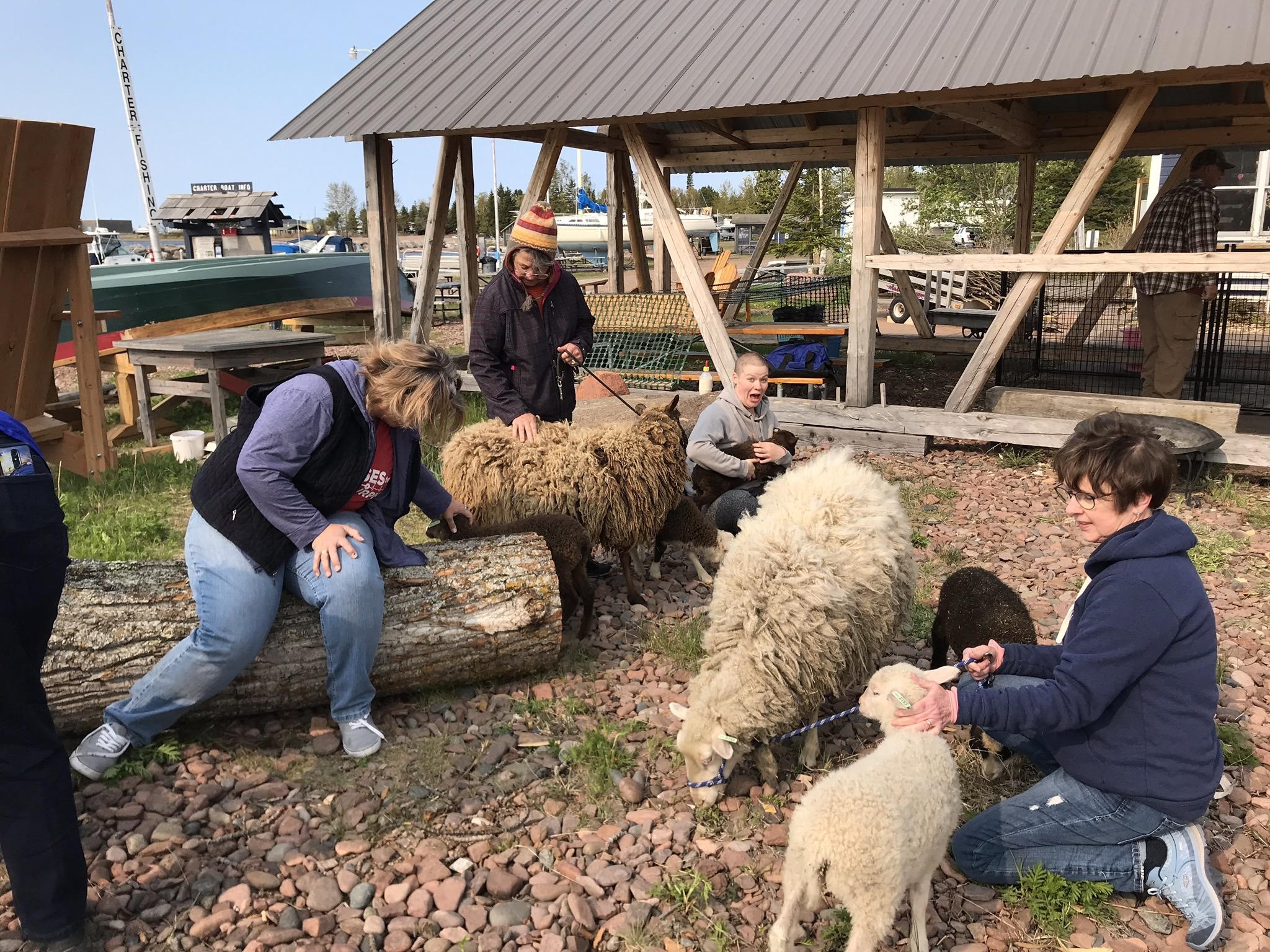
Two Finn Moms and Six Lambs
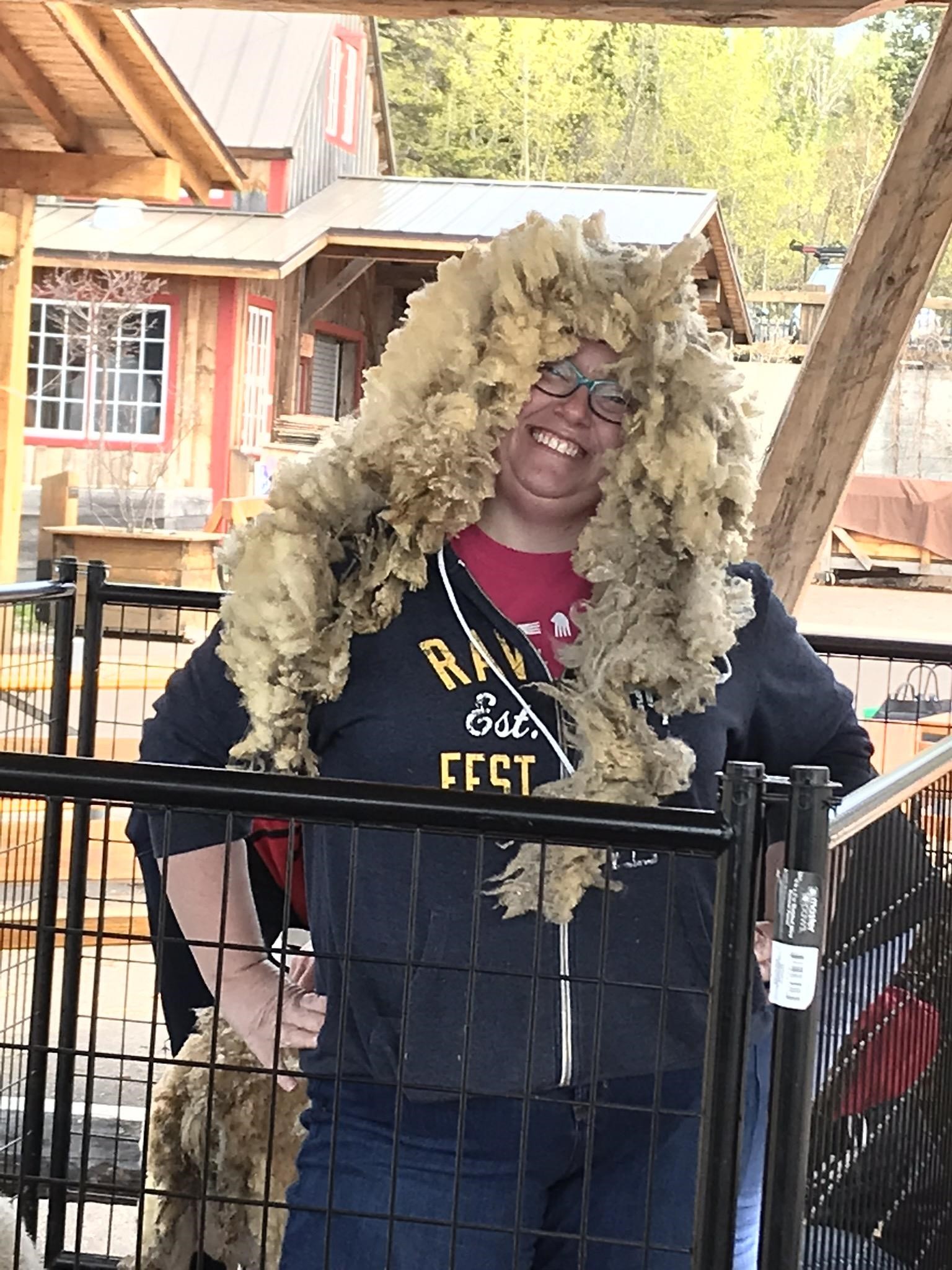
Anne with a raw fleece wig
Some of us go a step further and contemplate how to adopt them. Two lucky students in the class fell in love with the Finn lambs and purchased them for their growing flock. Since I live on a bedrock hillside and coyotes, fox, and wolves roam the woods, I dream of a village flock of fleece traveling about Grand Marais, mowing the lush lawns and roadsides of our town. Imagine, our gas guzzling, smelly lawn mowing engines would be replaced by a flock of migrant sheep. Suddenly all those lawns have a valuable purpose of feeding creatures and providing fiber and meat for our community.
Ahhh, I think I was dreaming….counting sheep as they leapt over fences….and now back to the story of Wool, the Full Experience.
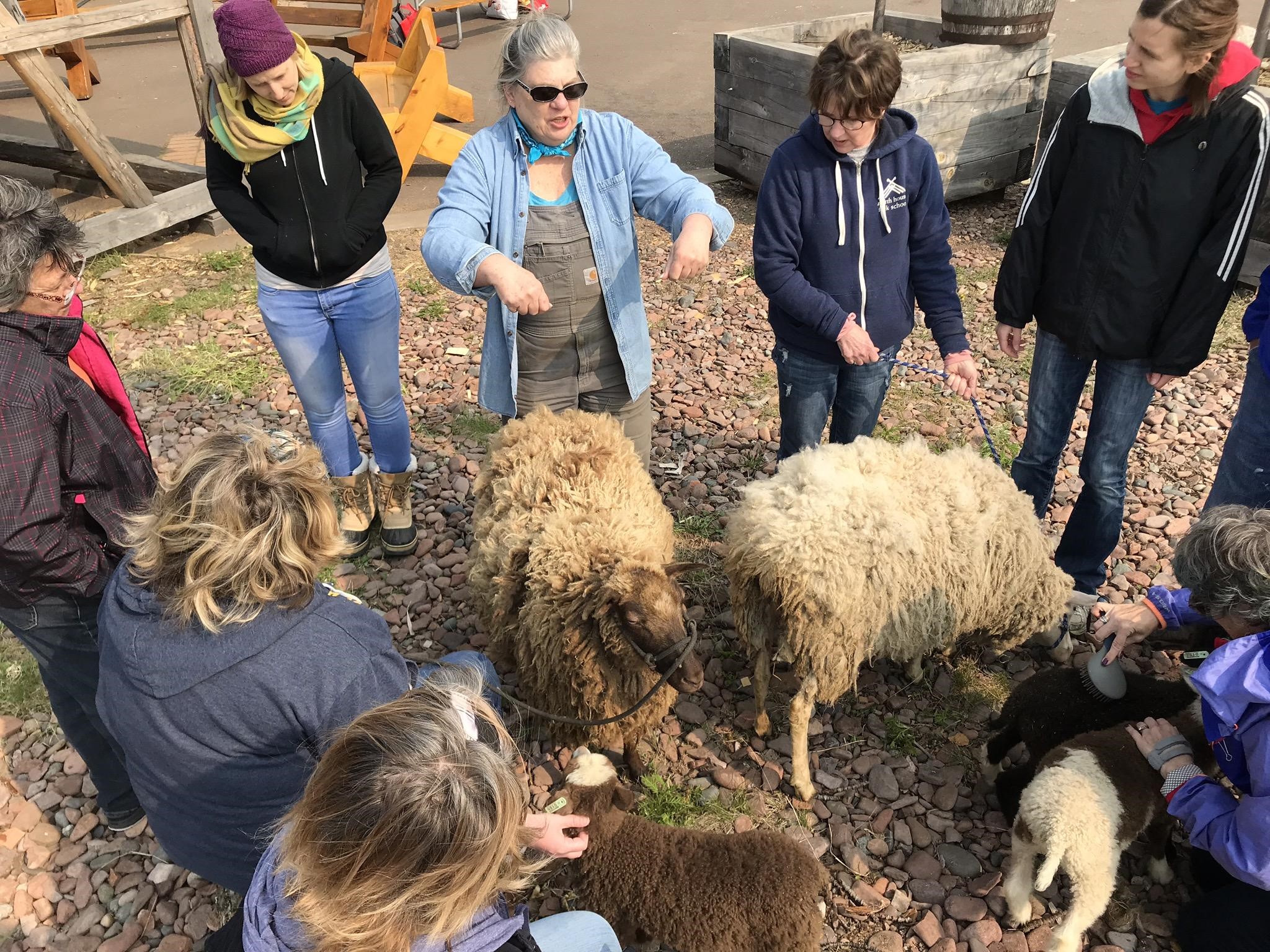
Heidi, sheep, and students
There are three instructors for this weekend: Heidi our shepherdess; Theresa, the natural dye and fiber teacher; and me, the organizer and felting teacher. Heidi Quist of Prairie Willow Farm, near Lindstrom, MN hauls a trailer full of farm animals to the Grand Marais harbor. Usually she brings two sheep for shearing, but this year we were lucky to have two sheep and six lambs. Sheep are traditionally sheared in late winter, so Heidi had to chose two sheep to shear for this spring class. Lucky for us, the two she choose both had triplets! They did a great job of mowing our grass and eating our dandelions on campus. We hand sheared the two mamas with hand clippers, each one producing about four pounds of wool. After we removed most of the lanolin and dirty, unuseable parts of the fleece through a hot water wash, our final wool weight was about five pounds of beautiful fleece for our projects.
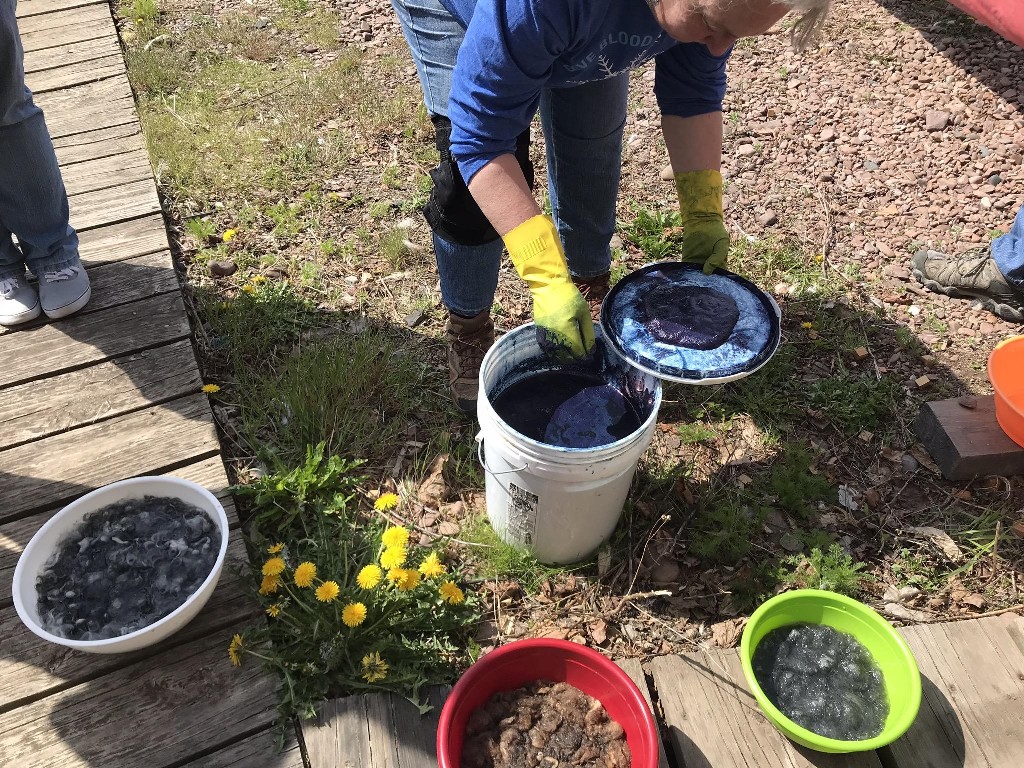
Theresa dyeing with indigo
Theresa Hornstein, our natural dye instructor, took this fleece and led us through all the steps of dyeing the wool with a rainbow of colors. We gathered materials, like tansy and poplar leaves, and Theresa provided other natural materials for about 10 different colors. Pots boiled and insects simmered, then the wool was submerged and gently pulled out of the pot, and it transformed into brilliant shades of pink, green, yellow, blue, and grey. We added a little alum, a little iron or vinegar, and different shades of color magically emerged. We were so lucky to have Theresa on the team, as she is a science teacher, a fiber artist, and loves to share her deep wisdom about chemistry and the alchemy of natural dying.
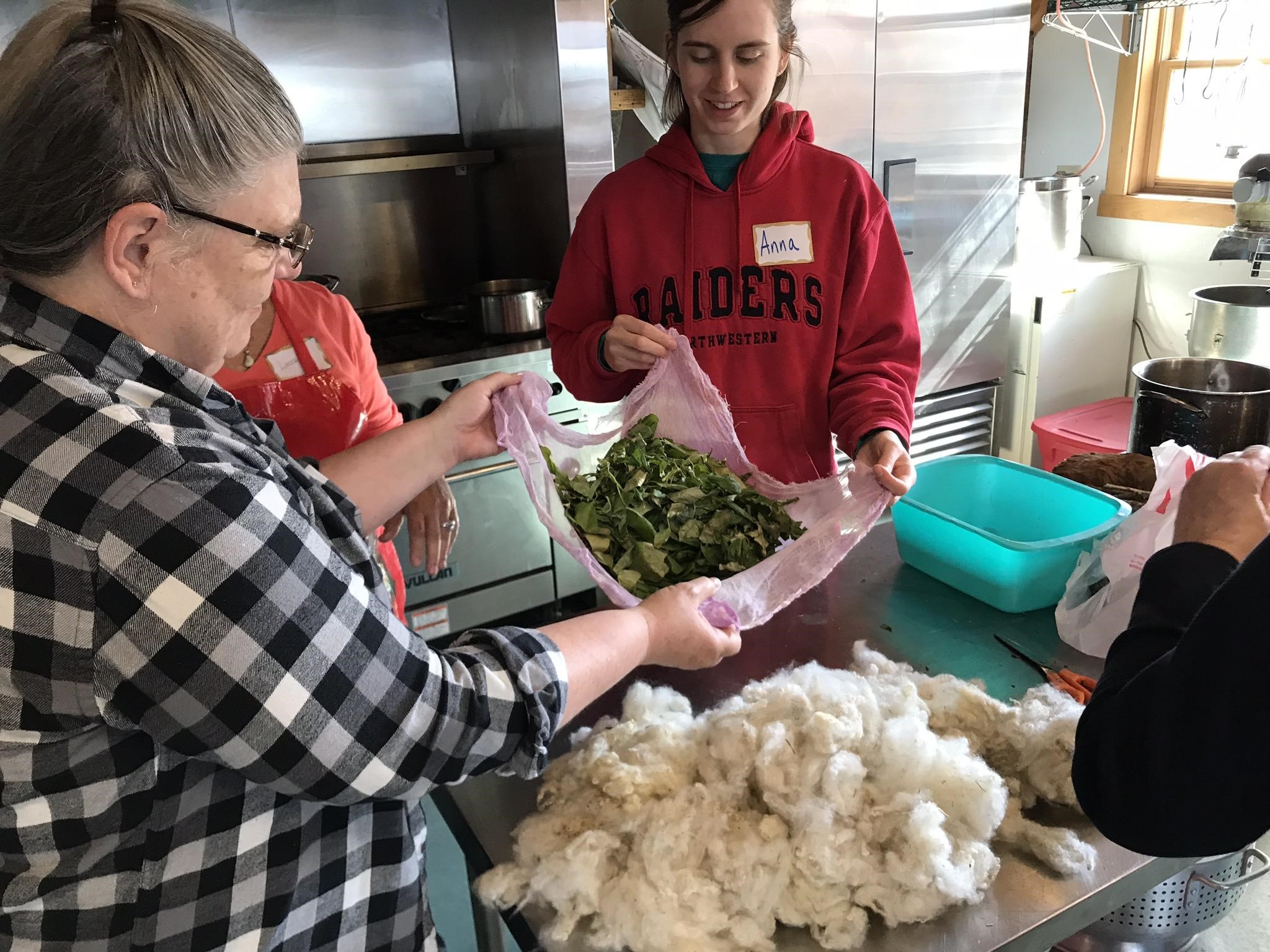
Preparing poplar leaves for the pot
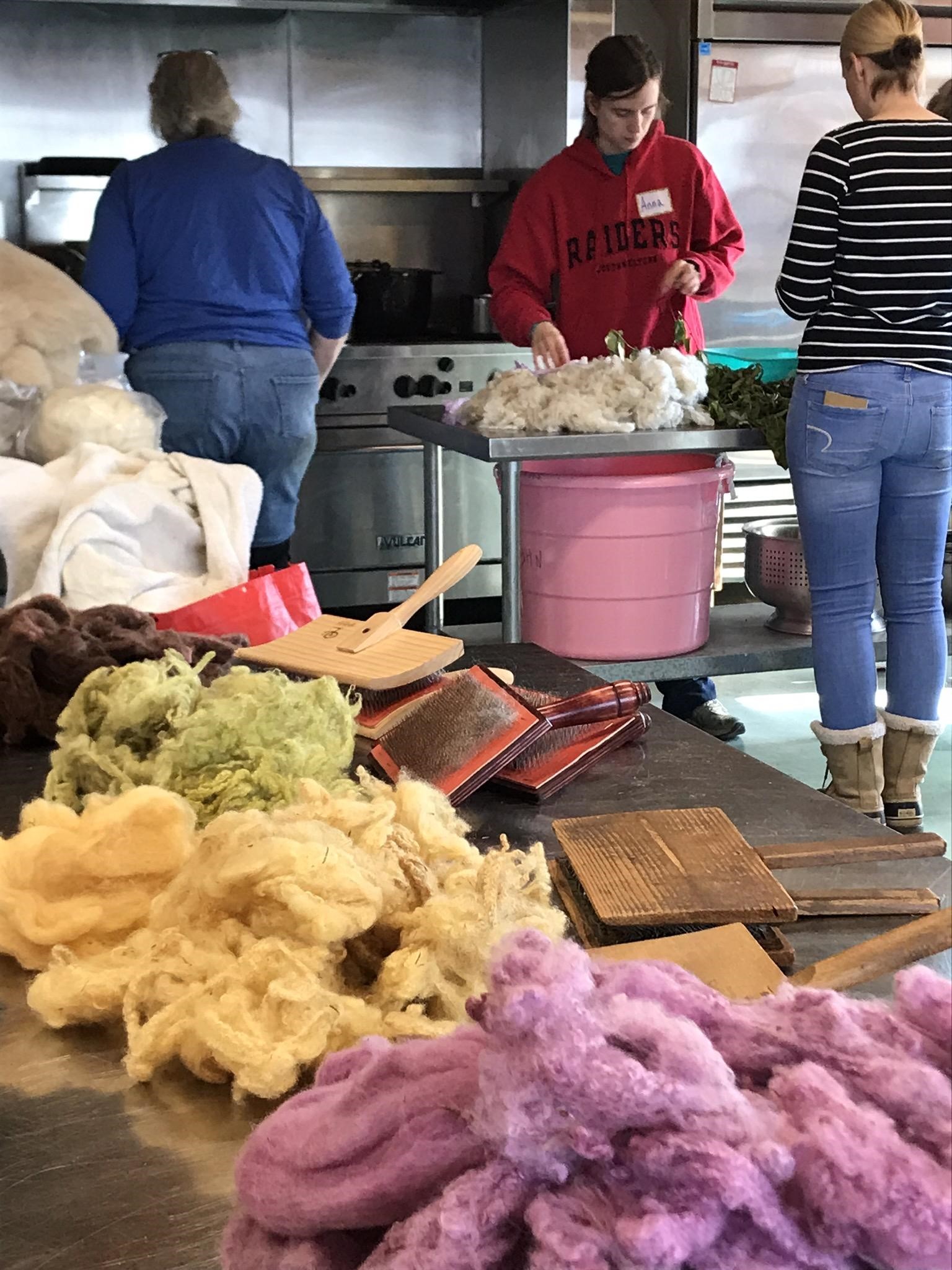
Dyed wool ready for carding
After dyeing the wool we went to work drying the wool so we could continue the process of carding the fibers and making batts of wool. We were gifted a perfect weekend of sunshine and light breezes which dried our wool right on schedule. As soon as the wool was dry, team “FULL WOOL” rallied to card the wool. We teased the fibers apart, making clouds of wool that could then be hand carded and then sent through the drum carder to make batts. The question always is, "Do we have to do all these steps?!" It is a slow process and each step leads to the next one. Like so many hand crafts, short cuts are few. It’s a process of love, attention to the details, and hopefully pleasure in or a meditation of the process. You can see why people traditionally gathered together to accomplish such tasks!
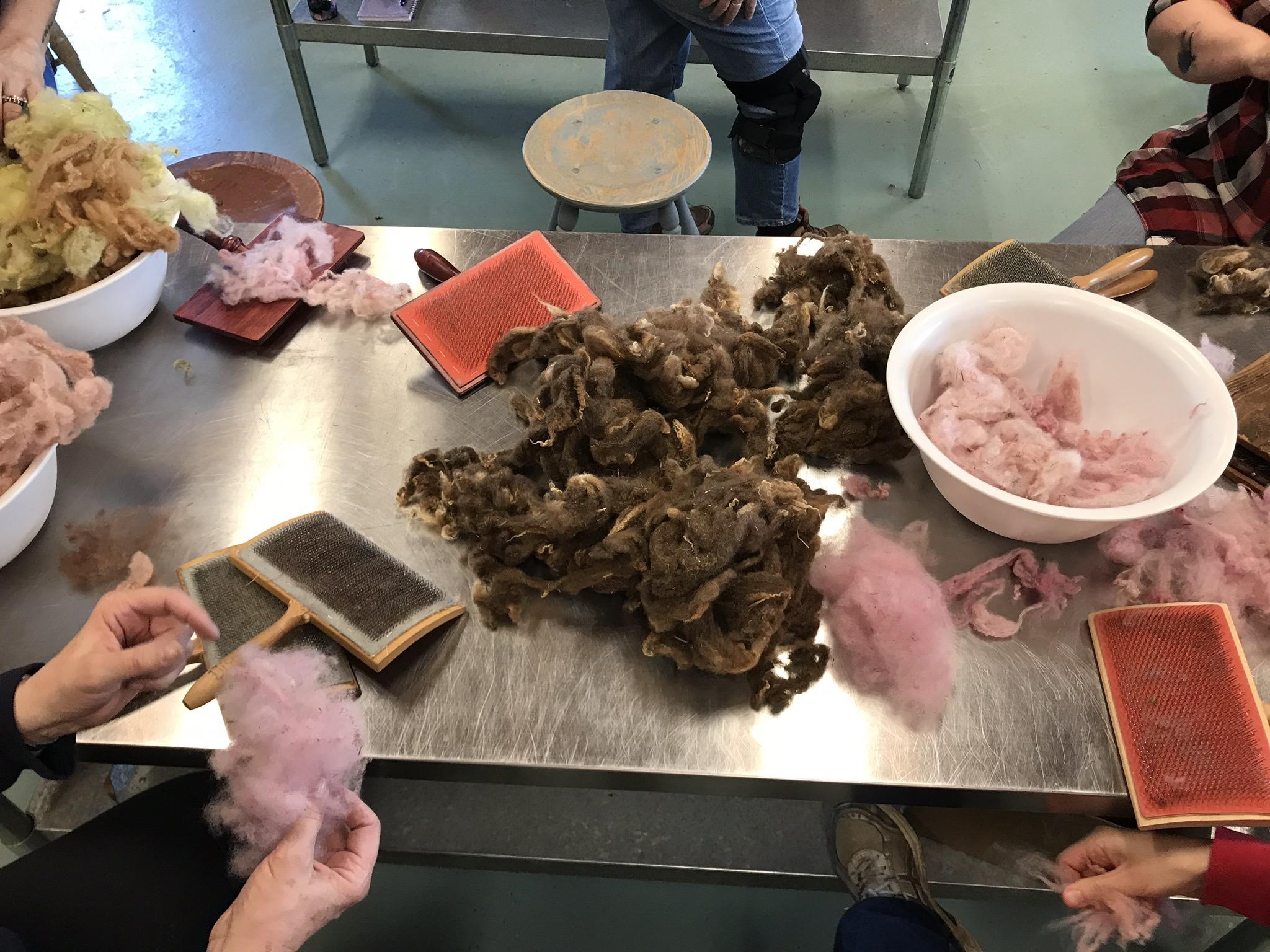
Colored wool and carders
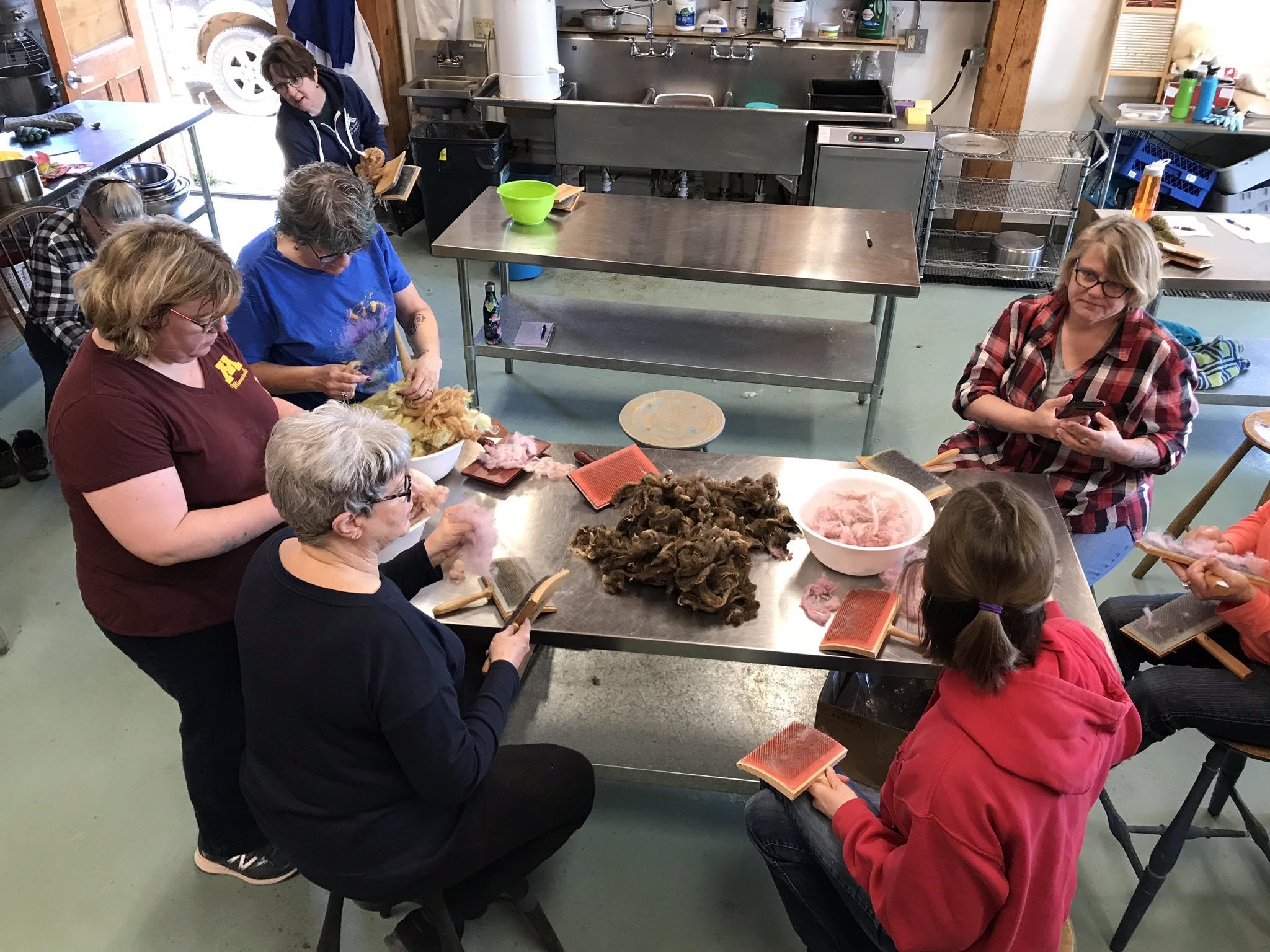
Carding the wool
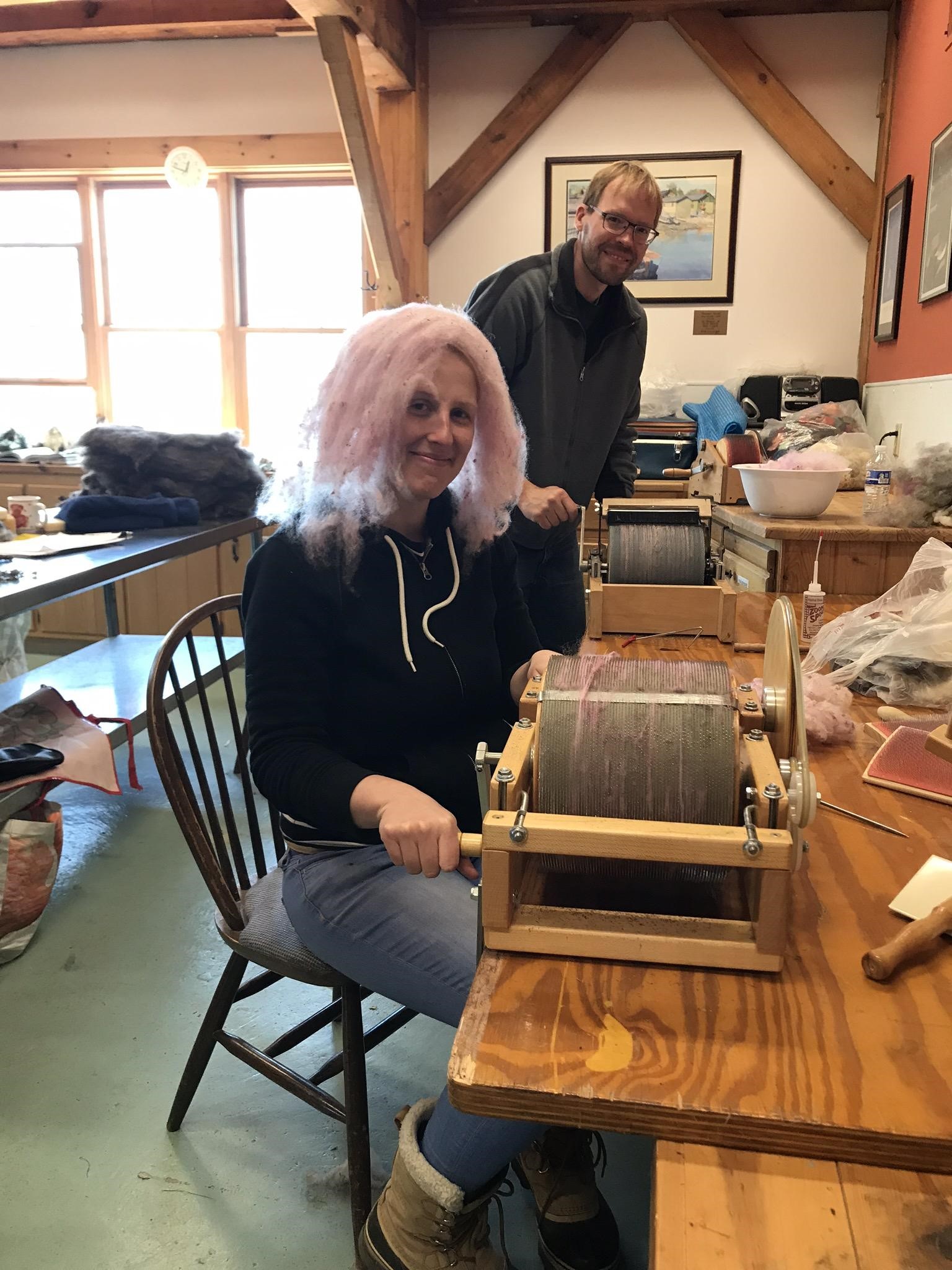
North House intern, Josie, with a cotton candy batt wig.
After all our wool was processed, we were ready to make things. Our first project was a small needle-felted item, 3-D or flat, where students learned the basics of needle felting. The main felted projects were wet felted, using a resist to create a three-dimensional piece. There was a wide variety of projects, each person choosing to make something different. Baby booties, mittens, cup cozies, kindle case, sculptures, seat cushions. It’s always great fun to watch a room of people create when they are given time, techniques, freedom, and supplies! Everyone was thrilled with what they made.
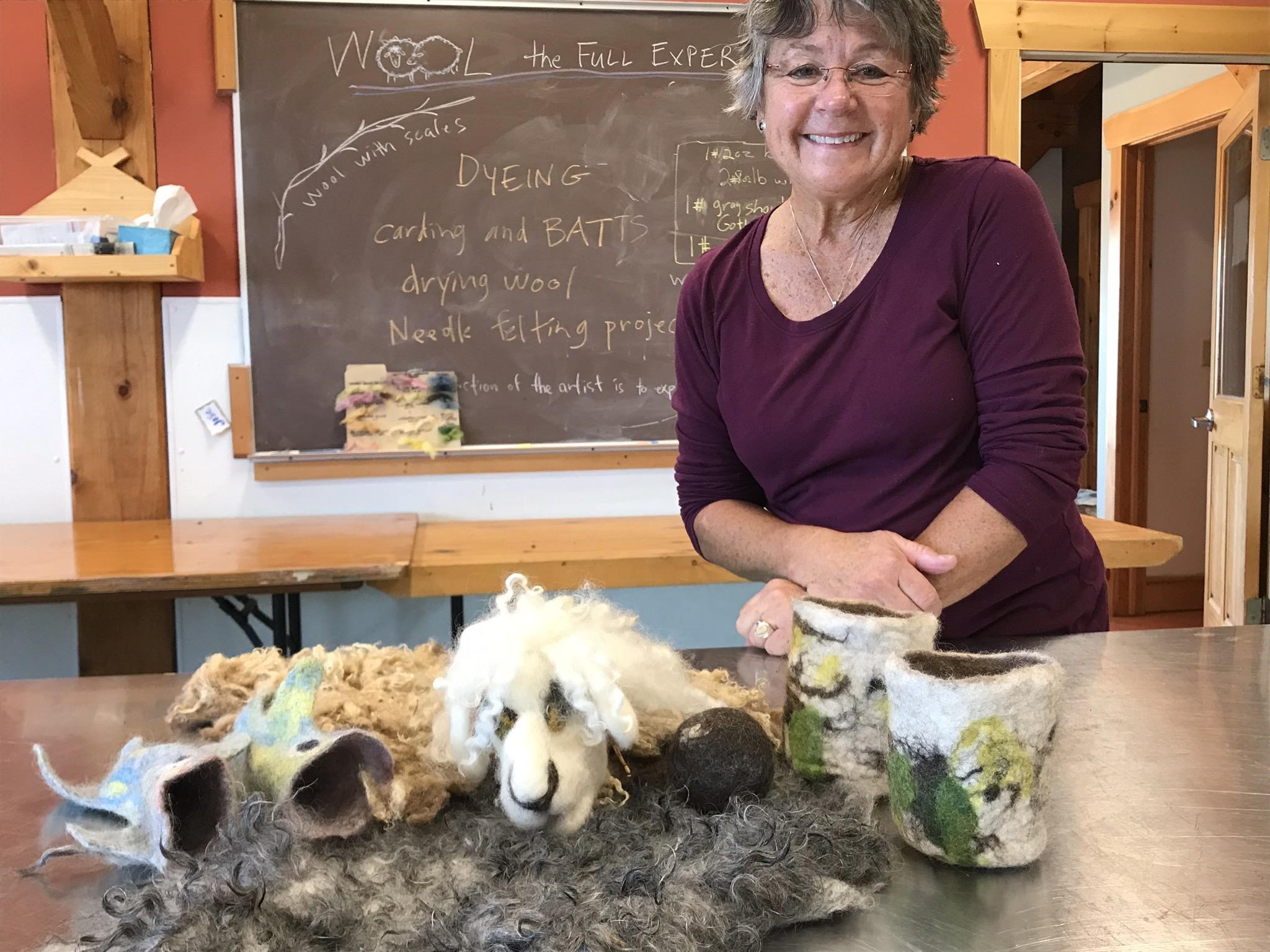
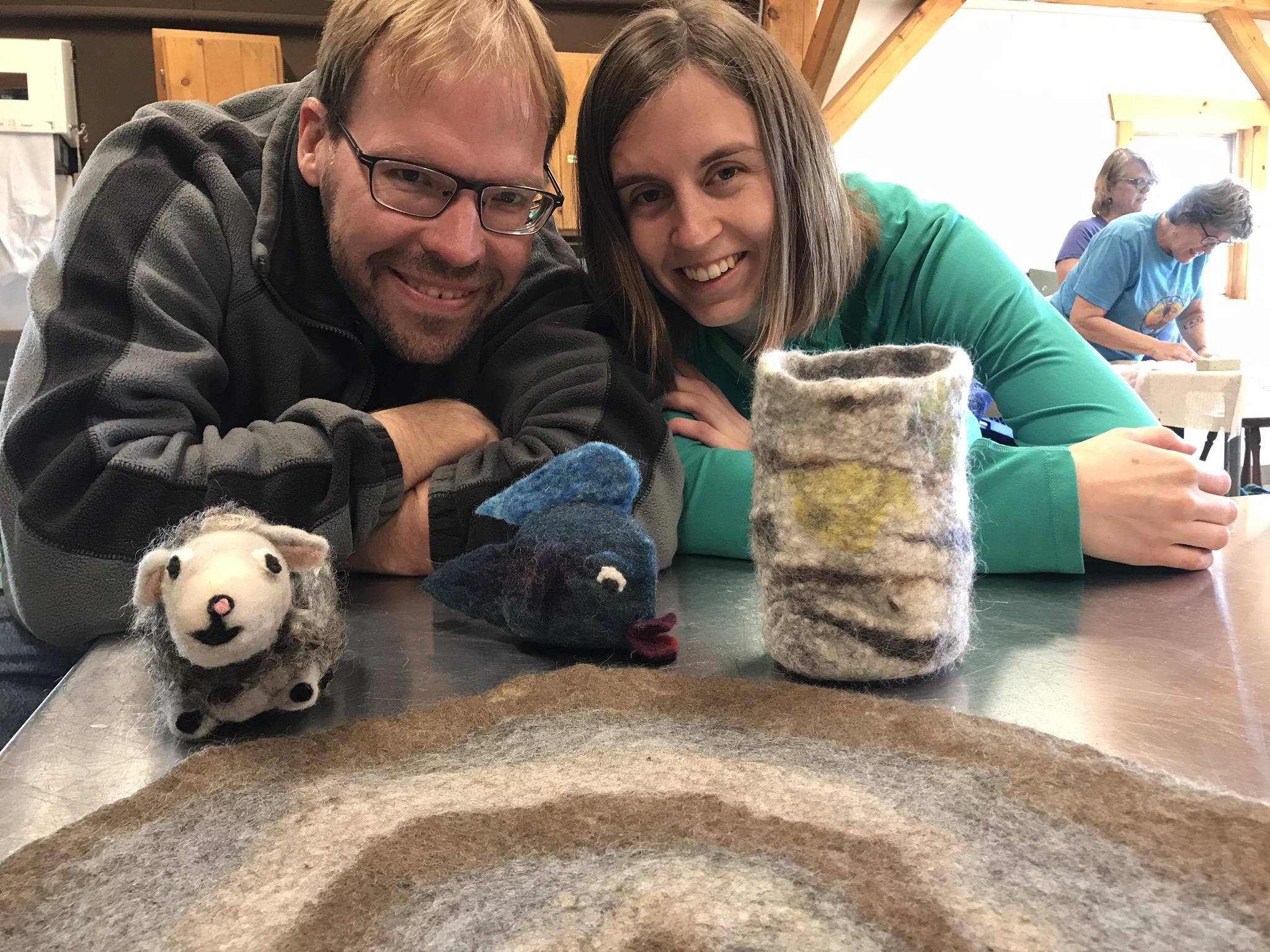
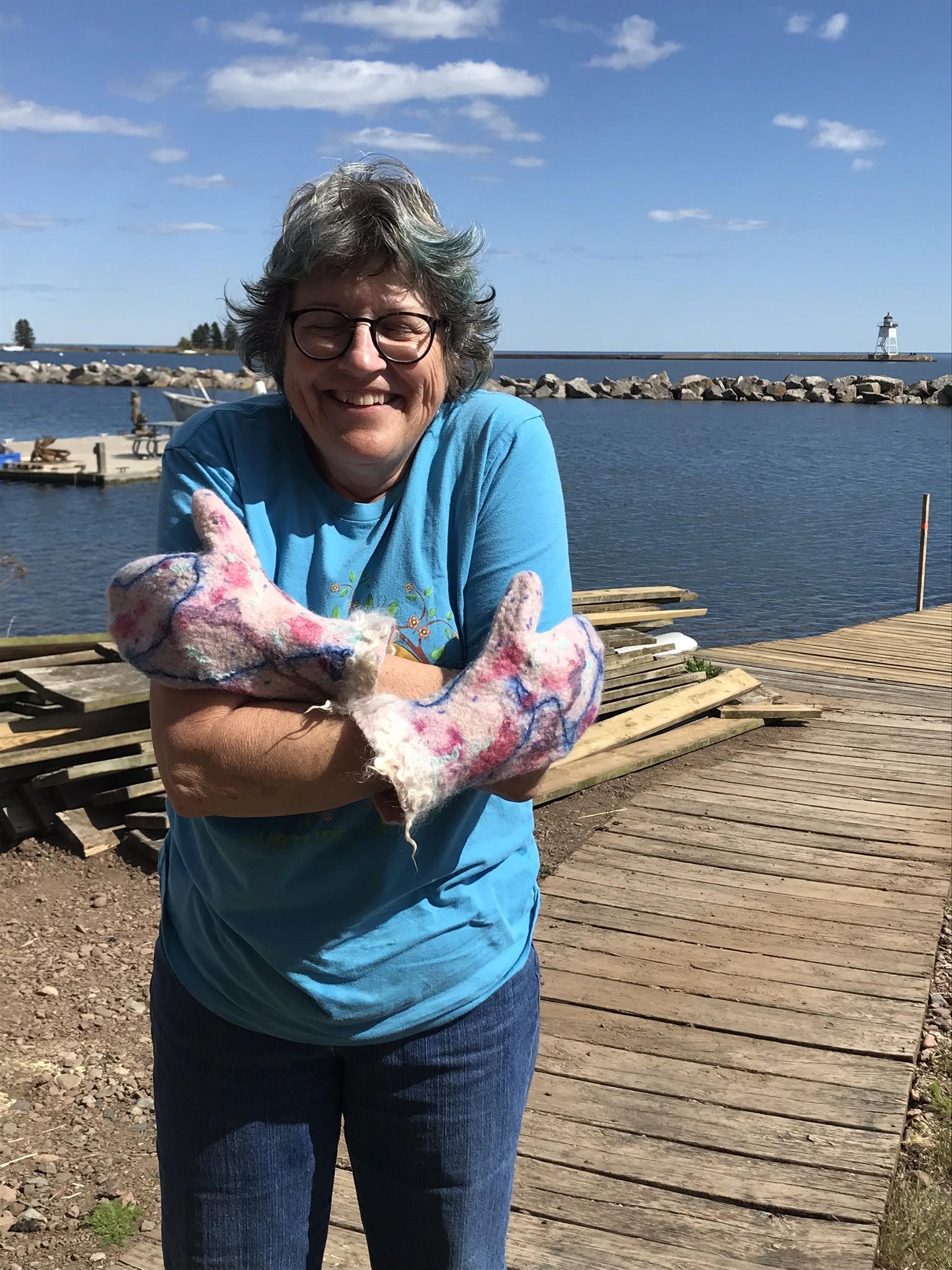
Everyone participated in every part of the process, from the first step of skirting the fleece which is pulling off dags or poop dried parts of fleece, to teasing the wool, washing, dyeing, drying, hand carding and drum carding and finally felting our final projects. Much laughter and conversations about knitting, spinning, patterns, natural dyes, sheep raising etc filled the air while our hands busily worked together over the 3 ½ days together. After experiencing the whole process from the fleece to the finished fiber, one may never again complain about how expensive wool is.
I feel so fortunate to be a part of this class. I get to spend the weekend with sheep and a group of people excited to learn about wool. I’m continually amazed by what wool can become and what students create. Combine hot water, soap, agitation (human energy) and a little creativity and the possibilities of wool are endless! Ohhh, did I mention, patience?!
